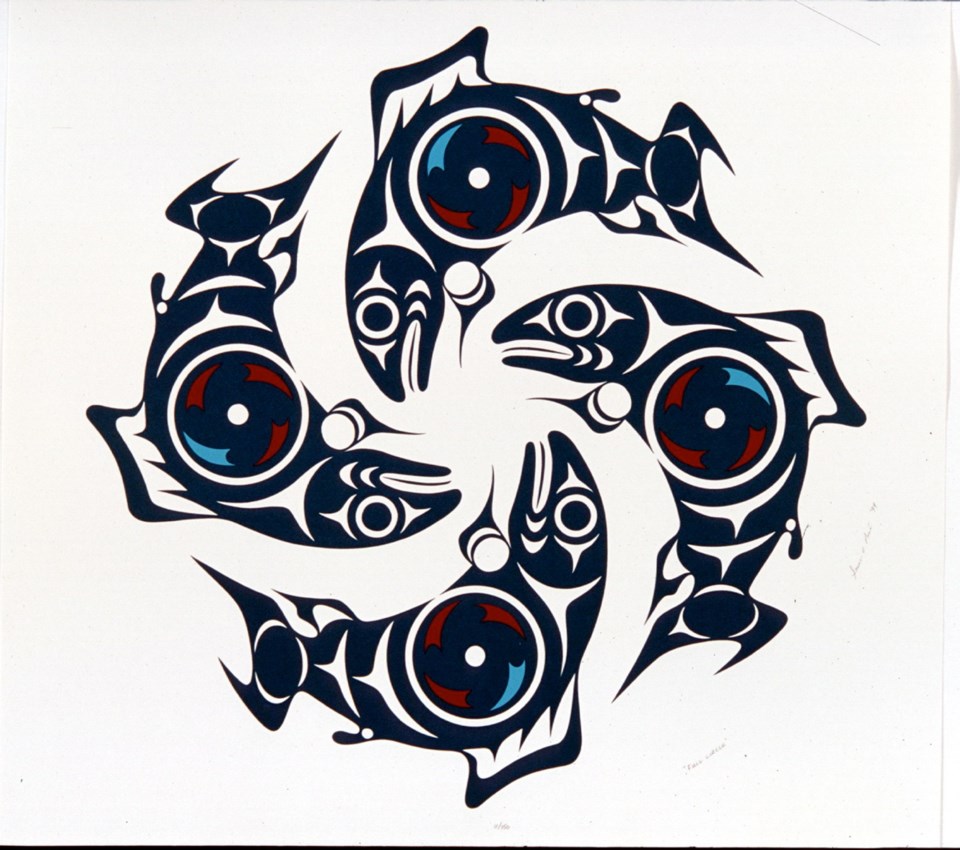EXHIBITION
What: Form as Meaning: First Nations Prints from the Pacific Northwest
When: Saturday 10 a.m. to 5 p.m.
Where: Art Gallery of Greater Victoria
Admission: Free
Lou-ann Neel still remembers the feel of ink on paper, the startling images, the excitement at seeing new pieces for the first time.
Neel was a teenager, working for a gallery and art publisher in Victoria in the late 1970s-early 1980s, and she instinctively knew that something important was happening in the world of First Nations art.
It had only been a few years since artists across the Pacific Northwest started taking designs typically used in carvings or textiles and rendering them as silkscreen prints. The technique allowed them to more easily market their work and it was quickly taking hold as a powerful new medium.
Neel had a front-row seat for all of it in her jobs at the Arts of the Raven Gallery and Ocean Pacific Graphics, now Pacific Editions Ltd. She saw the prints emerge from the silkscreening process, met the artists themselves when they came in to sign their artwork, and helped sell the finished products.
Today, sheтАЩs tapping into that experience as one of four guest curators тАФ along with Marcia Crosby, lessLIE, and Alana Sayers тАФ presenting an exhibit of First Nations prints at the Art Gallery of Greater Victoria.
The show, Form as Meaning, features prints spanning five decades drawn from the galleryтАЩs permanent collection. They include examples of Coast Salish, Nuu-chah-nulth, KwakwakaтАЩwakw, Haida and Tsimshian printmaking by a range of artists, including Art Thompson, Henry Hunt, Mark Henderson, Susan Point, Charles Elliott, Roy Henry Vickers and Freda Diesing.
Neel, an artist herself and descendant of the KwakwakaтАЩwakw-speaking people, said she drew on those influential teenage years when it came to selecting the pieces. тАЬOne of the things that kept coming back to my mind, when I was trying to decide between some of them, was to really dig deep and try to remember personally how it felt when I saw those prints coming off the print process тАФ handling them and what I thought of them, the texture of the ink on the paper.тАЭ
She chose, for example, Henry HuntтАЩs Salmon print that hung in the Raven Gallery, where she worked. It remains one of her all-time favourites.
тАЬIt was my absolute pleasure every time somebody would buy it, because to me, it was such a great example of really old classic southern Kwagiulth style of design,тАЭ she said.
тАЬThe colours were very traditional as well, and yet here it was on this print. IтАЩd never seen this kind of design on anything but on a plaque or on a carving.тАЭ
Neel, 54, said the prints represent another important way that First Nations pass along family history, legends and culture and, in many ways, continue a tradition of resistance.
тАЬTheyтАЩre evidence that we never put this stuff away,тАЭ she said. тАЬWe never gave up. We never stopped doing this. Even when the potlatch ban was in effect for 75 years, our old people continued this style and continued to teach.
тАЬSo the very fact that that generation got to walk into an entirely new world and technique and market тАФ and the fact that they even went into a market and that there was a market тАФ I think is a really strong statement about our survival and perseverance.тАЭ



